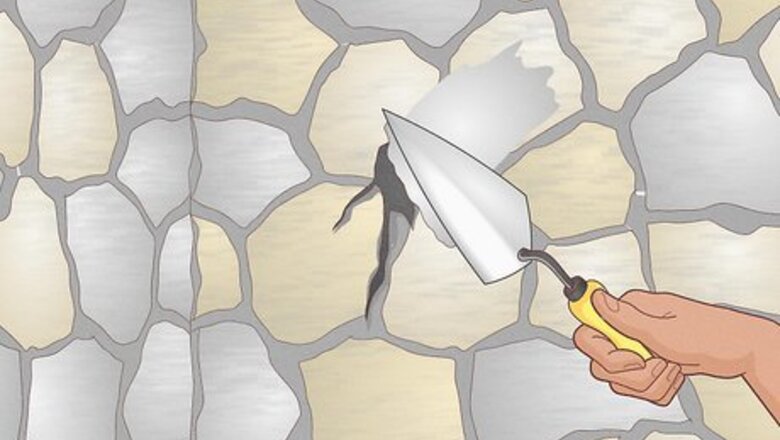
views
Prepare the Stone Basement for Painting
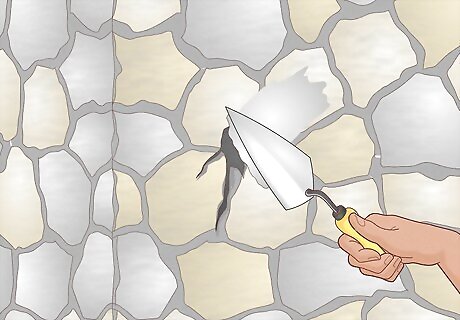
Repair stone walls. Fill in all holes and cracks with a concrete repair product like hydraulic cement, which is available at home improvement centers. Follow the manufacturer's instructions for application.
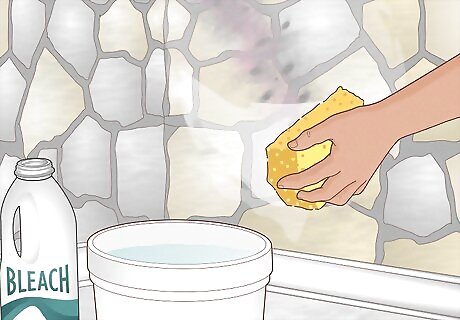
Remove stains caused by mold and mildew. Apply a solution of 2 tbsp. (14.8 ml) of bleach and 1 quart (0.95 liters) of warm water. Blot the affected area with a sponge or cloth saturated with the solution. Continue blotting until the stain disappears. Remove stains with a commercial grade mold and mildew remover. Commercial mold and mildew cleaners are available at most home improvement centers.
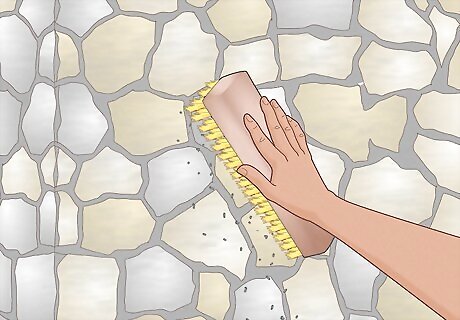
Clean the stone walls. Remove dust, dirt and oil from the stone basement walls prior to painting. Remove loose dirt and debris with a coarse brush. Clean the walls by wiping them down with a damp cloth. Use a commercial degreasing product to remove stubborn grease or oil stains. Commercial grade degreasing solutions are available at most home improvement stores. Follow the manufacturer's directions for application. Utilize a pressure washer to remove dirt and debris. Pressure washers are available for rent at most home improvement stores. Exhibit caution when using a pressure washer to clean stone walls. To avoid damage to the stone basement, use the pressure washer on the lowest pressure setting and gradually increase the pressure.
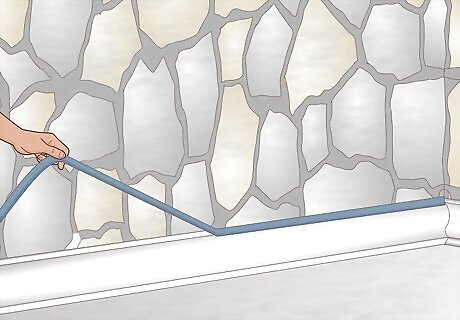
Protect any areas you do not want painted. Move all furniture to the center of the basement so the painting areas are clear of any obstacles. Cover any areas of the walls you do not want painted, such as baseboards or doorways, with painter's tape. Let the stone dry entirely before you start priming. Typically, it will take at least 24 hours for the stone to dry.
Prime the Stone Basement Walls
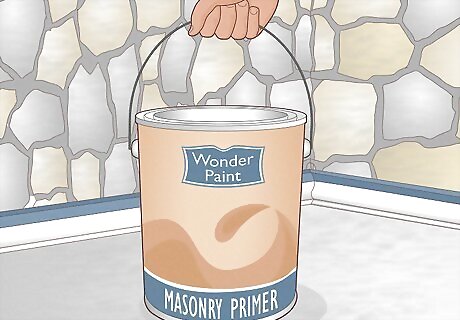
Select a primer created specifically for masonry. Masonry primers will adhere to the stone walls better and provide more durability than general primers. Masonry primers also protect the stone from water damage. Primer is mandatory, so don’t skip this!
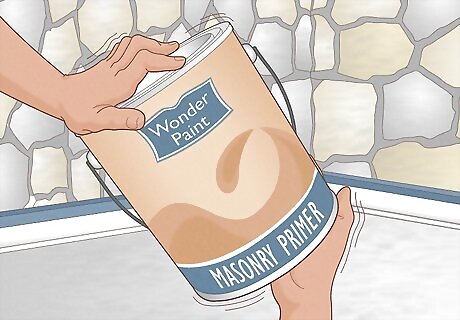
Mix the masonry primer. With the lid on, vigorously shake the primer container to mix the contents.
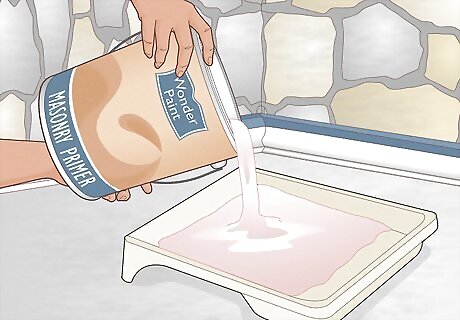
Pour the masonry primer into a bucket or paint tray.
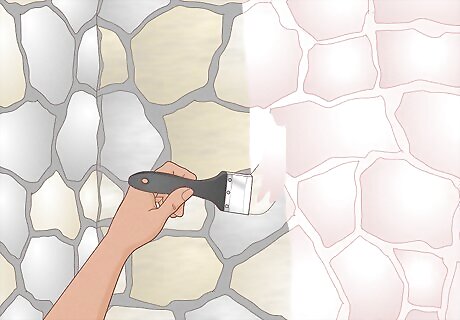
Apply the primer to the stone walls. Follow the instructions for your specific masonry primer. If no directions were supplied, follow these general guidelines for applying masonry primer to stone walls. Use a wide nylon/polyester brush to apply the primer. The brush should be between 2 and 3 inches (5 and 7.6 cm). Avoid rollers when painting stone basement walls because the roller won't get the paint into the small uneven surfaces of the stone. The rugged stone surface also could tear a roller cover. Cut in a 2- to 3-inch (5- to 7.6-cm) border around the top, bottom and sides of the stone walls. Start by applying masonry primer in 1 corner and continue along the edge of the wall. Paint the masonry primer onto the stone walls in 4-foot by 2-foot (1.2-m by .6-m) sections. As you apply the primer, overlap into the previously applied and cut in areas for consistent coverage.
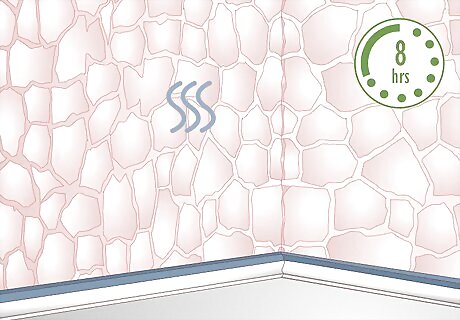
Allow the primer to dry. For best results, let the masonry primer dry for a minimum of 8 hours.
Paint the Stone Basement Walls
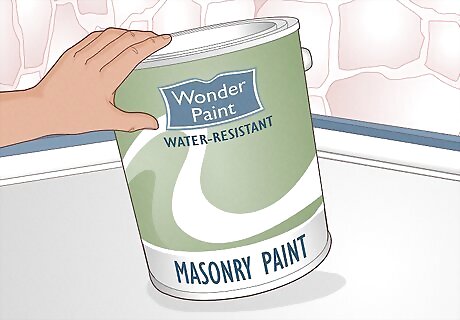
Choose a wall paint. Select a water-resistant masonry paint made specifically for porous surfaces. A water-resistant paint will provide a moisture barrier for your stone basement, and the alkali resistant coating will offer increased durability. Select a paint color that complements your basement's decor. Masonry paint is available in several colors at home improvement and paint stores.
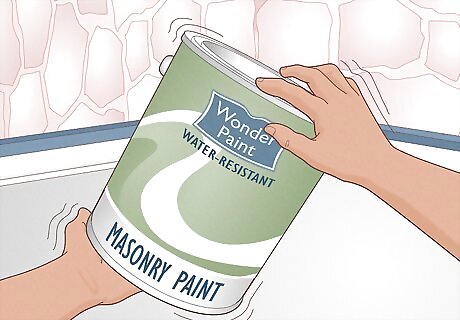
Mix the masonry paint. With the lid on, vigorously shake the paint container to mix the contents.
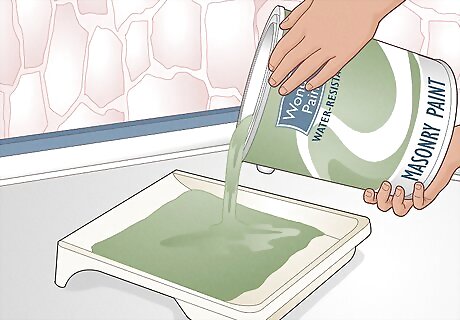
Pour the masonry paint into a paint tray.
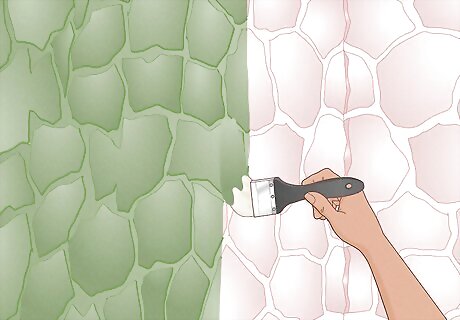
Apply the paint. For best coverage and moisture protection, apply 2 to 3 coats of masonry paint to stone walls. Use a wide nylon/polyester brush to apply the masonry paint. The brush should be between 2 and 3 inches (5 and 7.6 cm). Avoid rollers when painting stone basement walls because the roller won't provide coverage in the uneven surfaces of the stone. The rugged stone surface also could damage a roller cover. Cut in a 2- to 3-inch (5- to 7.6-cm) border around the top, bottom and sides of the stone walls. Start by applying masonry paint in 1 corner and continue along the edge of the wall. Paint the masonry paint onto the stone walls in 4-foot by 2-foot (1.2-m by .6-m) sections. As you apply the paint, overlap into the previously applied and cut in areas for consistent coverage. Allow the paint to dry for a minimum of 4 hours in between coats of paint. Evaluate the coverage after the second coat of paint. Check the small crevices in the stones to ensure even coverage. The walls may need a third coat of paint, or spot applications in the stone wall's nooks and crannies may be necessary.
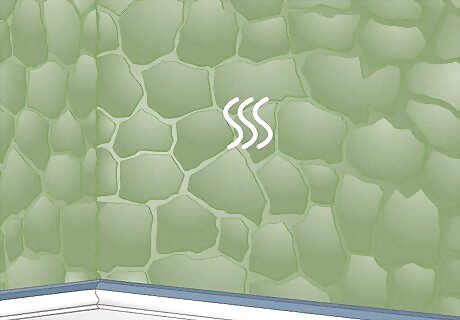
Allow the paint to dry completely.















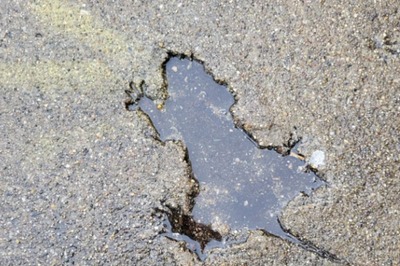

Comments
0 comment